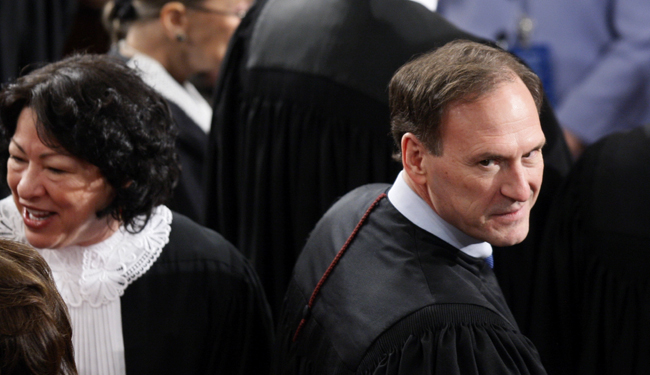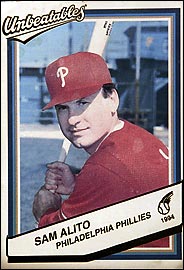It’s one of those things that lawyers learn early on: keep a professional demeanor in court. You will get your chance to argue. Making faces while your opponent argues exposes a childish temperament.
But someone forgot to teach that to United States Supreme Court Justice Samuel Alito, or he failed to learn the lesson. According to this piece in the Washington Post today by Dana Milbank, Alito has been acting like a middle schooler with his facial expressions when others dare to disagree with him.
I won’t steal all of Milbank’s words, but here are a select few as he describes Alito’s facial expressions when a judge 17 years his senior dares to have a different opinion than he does:
When Justice Ruth Bader Ginsburg read her dissent from the bench, Alito visibly mocked his colleague.
Ginsburg, the second woman to serve on the high court, was making her argument about how the majority opinion made it easier for sexual harassment to occur in the workplace when Alito, seated immediately to Ginsburg’s left, shook his head from side to side in disagreement, rolled his eyes and looked at the ceiling.
If this happened as Milbank describes, there is frankly no excuse for it. I’ve seen judges admonish counsel who did this during oral arguments.
But it wasn’t the only time Milbank saw this:
Days earlier, I watched as he demonstrated his disdain for Elena Kagan and Sonia Sotomayor, the two other women on the court. Kagan, the newest justice, prefaced her reading of an opinion in a low-profile case by joking that it was “possibly not” the case the audience had come to hear. The audience responded with laughter, a few justices smiled — and Alito, seated at Kagan’s right elbow, glowered.
And the country as a whole watched this during the 2010 State of the Union when President Obama criticized the court for allowing unfettered corporate spending in political campaigns with its Citizens United decision, with Alito shaking his heads and mouthing a protest. The other justices kept their poker faces intact.
The eye-rolling behavior witnessed yesterday by Milbank, by the way, was also noted by Garrett Epps writing for The Atlantic. He noted about the inexcusable rudeness:
I suspect that the cause of cameras in the Supreme Court suffered a blow on Monday. I am glad the nation did not see first-hand Justice Samuel Alito’s display of rudeness to his senior colleague, Justice Ruth Bader Ginsburg. Because Alito’s mini-tantrum was silent, it will not be recorded in transcript or audio; but it was clear to all with eyes, and brought gasps from more than one person in the audience.
Once upon a time Alito was a federal prosecutor. Did he roll his eyes and make faces to the jury back then when defense counsel spoke? Or was he able to refrain because, as a prosecutor, he could pick the cases the wanted — ones that, perhaps, had overwhelming evidence in his favor — and was never seriously challenged by an equal?
If I were a judge and saw that type of disrespectful conduct from counsel, I would think in terms of admonishment. Repeat conduct could be subject to sanctions.
Notwithstanding this, I’d love to meet him. With all his facial tells, perhaps I can persuade him to come by for a poker game.

